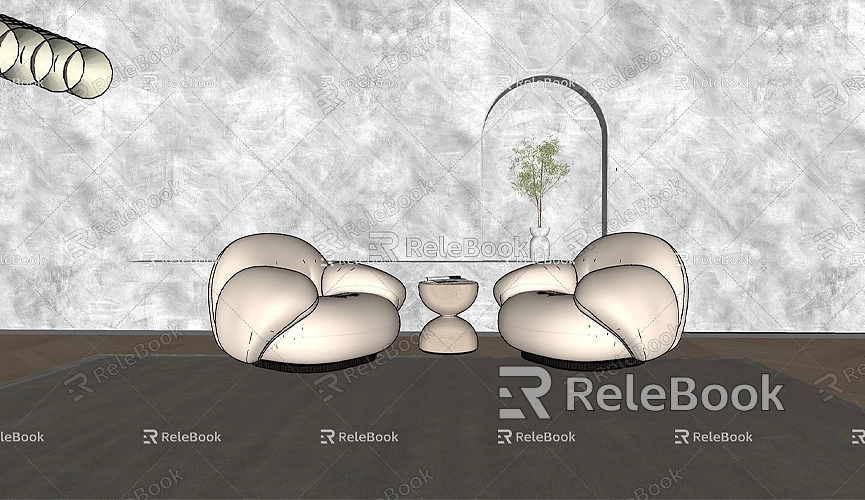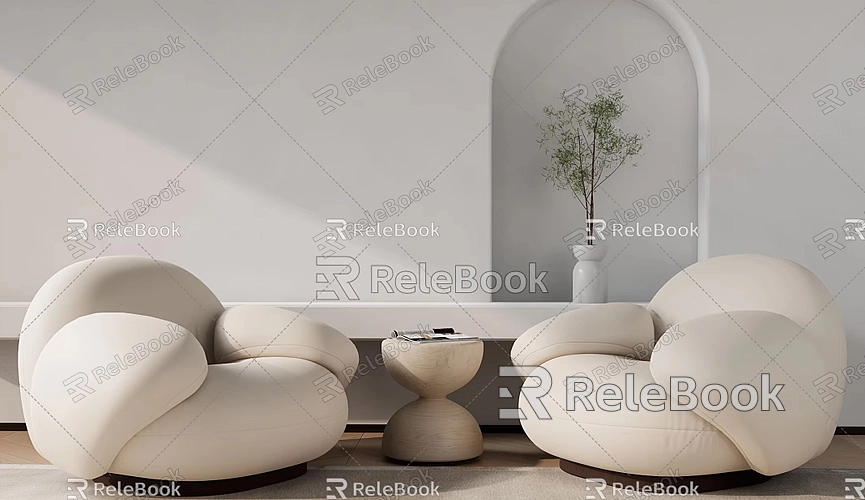How to Clean Up Your SketchUp Model
As you work on 3D modeling with SketchUp, unnecessary geometry, materials, and components can accumulate over time, making your model cluttered and slowing down the software. These redundant elements not only affect performance but can also impact the final rendering quality. Therefore, learning how to clean up your SketchUp model is an essential skill for every designer. This article will detail how to efficiently clean your SketchUp model to optimize your workflow and enhance design efficiency.
Why Clean Up Your SketchUp Model?
When working on large architectural, interior design, or other complex 3D projects, it's common to continually add and modify details. This can lead to redundant elements, such as unused components, hidden geometry, and duplicate lines and faces. Failing to clean up these elements can result in larger file sizes, slower loading times, and unpredictable rendering issues. Therefore, regular cleaning and optimization of your model is crucial.

Common Issues When Cleaning a SketchUp Model
Before diving into the cleaning process, let’s look at some common issues found in SketchUp models:
- Duplicate and Unused Components: Many users rely on copy-and-paste functions, which can create numerous duplicate components. Unused components might be objects that were temporarily added but never deleted.
- Unnecessary Materials: Experimenting with different materials and textures can lead to a buildup of unused materials, cluttering the project file and consuming storage space.
- Hidden and Ungrouped Geometry: While hidden geometry can assist with temporary alignment during modeling, any elements not needed in the final design should be removed.
- Messy Layers (Tags) and Scenes: As a project evolves, many layers and scenes may be created for different stages. Without proper organization, managing the project can become challenging.
Steps and Tips for Cleaning Up Your SketchUp Model

Check and Delete Unused Components
In SketchUp, you can check for unused components by navigating to “Model Info” under the “Window” menu. Click on the “Statistics” tab and select “Purge Unused” to automatically remove all unused components, materials, and styles. This is a simple and effective way to clean up your model.
Additionally, you can manually delete unnecessary components from the “Components” panel, especially after importing models, which can result in many duplicates.
Remove Unnecessary Materials
In the materials panel, you can view all materials in your model. Use the “Edit” feature to adjust or delete materials that are no longer needed, keeping your model clean. Material cleanup is an important task in complex models, significantly reducing file size and loading times.
If you need high-quality 3D textures and HDRIs for creating models and virtual scenes, you can download them for free from [Relebook](https://textures.relebook.com). For exquisite 3D models, visit [Relebook](https://3dmodels.relebook.com), which offers a wealth of premium resources.
Merge and Delete Duplicate Lines and Faces
Models may sometimes contain duplicate lines and faces, which add unnecessary complexity. In SketchUp, you can select and delete these duplicates by entering “Edit Mode.” Additionally, plugins like “CleanUp³” can help automatically identify and remove redundant geometry.
Remember to back up your model before using plugins to avoid accidentally deleting important details, as while plugins can expedite cleanup, mistakes can happen.
Optimize Model Layers and Grouping
Effective management of layers and grouping in SketchUp can help you work more efficiently with complex models. Use tags (formerly called layers) to categorize different types of geometry, allowing you to hide or display specific parts easily and reduce visual clutter. If you find ungrouped objects, manually group them to maintain model cleanliness.
After completing a project, consider merging excessive layers and deleting unnecessary tags to simplify project management, making the model easier to understand and manipulate.
Use Plugins and Tools to Accelerate Cleanup
In addition to manual cleaning, many plugins in SketchUp can speed up the cleanup process. For example:
- CleanUp³: A very practical plugin that automatically detects and removes unused components, materials, and styles, as well as cleans up duplicate geometry.
- Purge All: A quick tool for deleting unused items, ideal for a final cleanup before exporting your model.
- Solid Inspector²: Helps check whether the model is a solid, quickly identifying and fixing any gaps in the model.
These tools can make your cleanup work more efficient, but make sure to familiarize yourself with them beforehand to avoid accidental data loss.
Effects and Benefits After Model Cleanup
After cleaning, your SketchUp model will not only significantly reduce in file size but also improve in performance. A clean model results in clearer and more streamlined designs, enhancing both modeling and rendering efficiency. Furthermore, a well-organized model is easier to maintain when exporting to other software (like Blender or Rhino), minimizing issues during the import-export process.
Additionally, a tidy model simplifies future modifications and edits. Good model management saves time, preventing the need for rework due to a cluttered model during complex projects.
Cleaning your model is a critical step in 3D modeling. By removing unused components, optimizing materials, deleting duplicate geometry, and properly managing layers and groups, you can make your SketchUp model more efficient and ensure smooth project progression. Using plugins and tools can help you complete these tasks quickly, but it's wise to back up your work to avoid losing essential data.
Whether you are a beginner just starting with SketchUp or an experienced designer, regularly cleaning your models is a good habit for maintaining efficiency and organization. We hope this article helps you clean your SketchUp models more effectively. If you need high-quality 3D textures and HDRIs for creating models and virtual scenes, download them for free from [Relebook](https://textures.relebook.com). For exquisite 3D models, visit [Relebook](https://3dmodels.relebook.com), which offers a wealth of premium resources.

